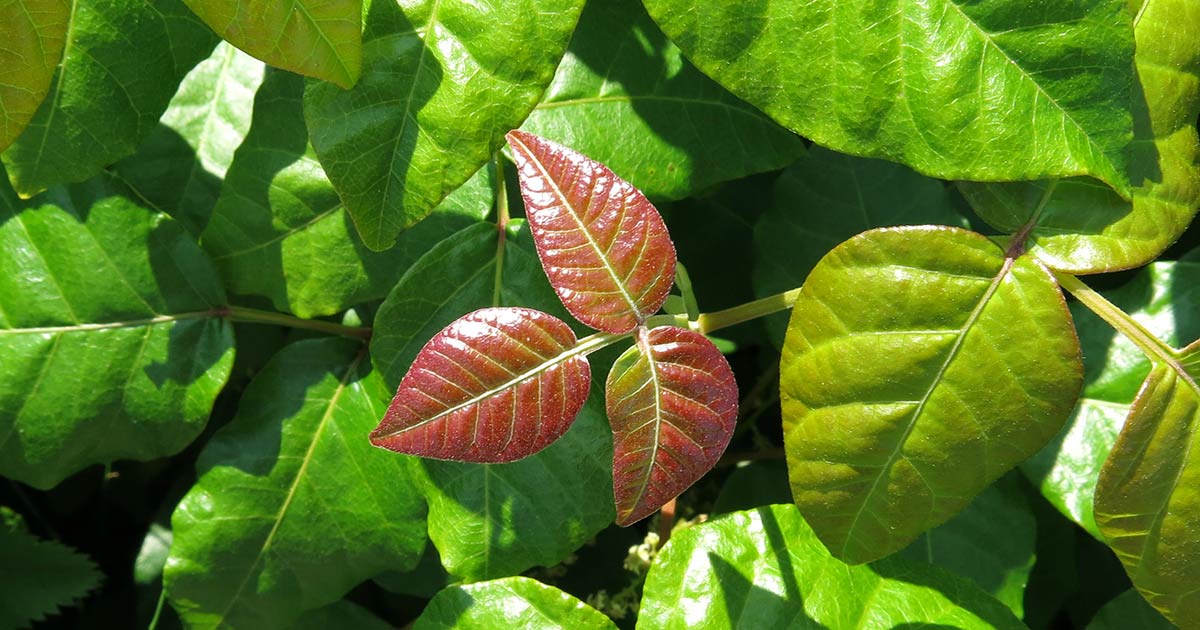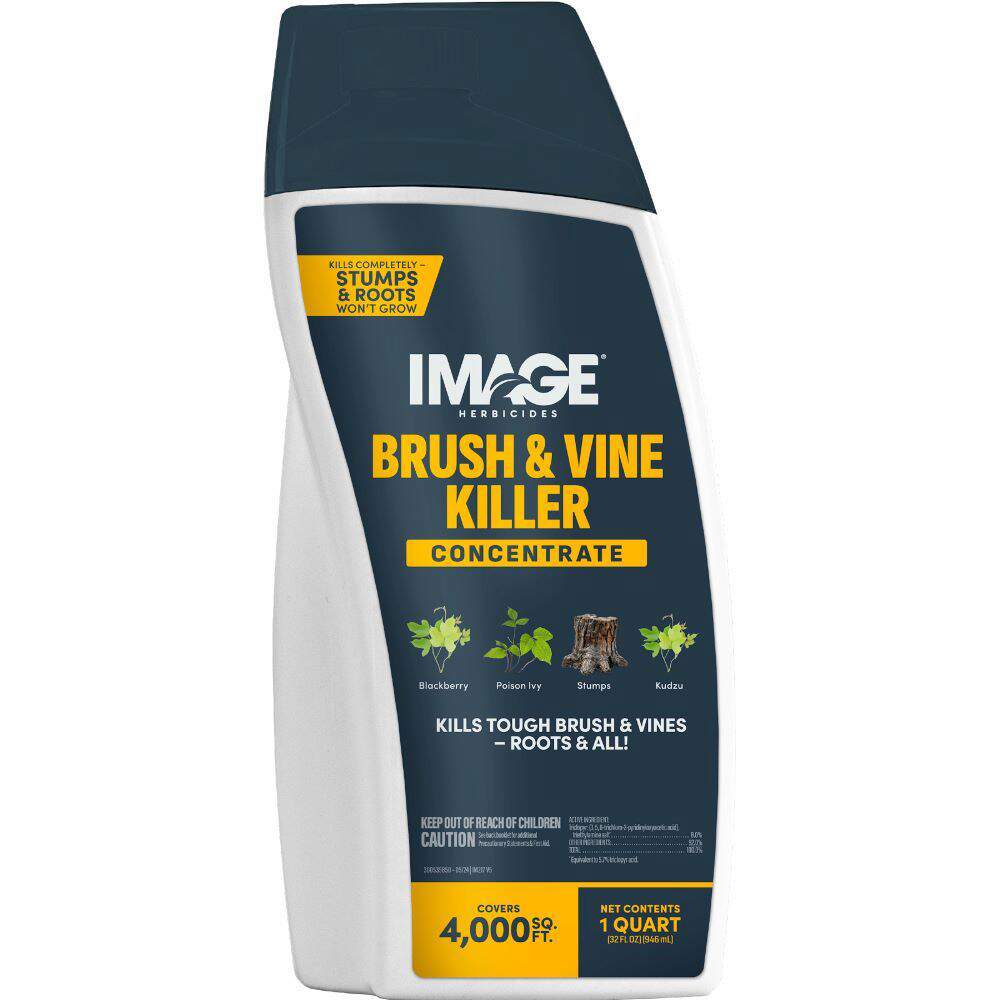Identify and Kill Poison Ivy, Poison Oak and Berry Brambles

Woody vines and brush can dampen your family's outdoor fun, especially when those plants cause allergic reactions or leave skin with welts or cuts. Run-ins with poison ivy and poison oak result in painful, blistering dermatitis, and berry brambles create barriers of skin-piercing thorns. When these shrubs and vines press in around your lawn and home, you can take back your landscape and put an end to their advance.
Follow these steps to kill poison ivy, poison oak and berry brambles in your lawn:
- Understanding Harmful Vines and Brush
- Taking Back Your Outdoor Living Spaces
- Timing Treatments for Maximum Impact

Like poison ivy, poison oak grows as a shrub and a vine.
UNDERSTANDING HARMFUL VINES AND BRUSH
Woody brush and vines such as poison ivy, poison oak and wild blackberries spread in several ways. Poison ivy grows as a shrub and as a vigorous vine that climbs trees and snakes along the ground. Its underground roots and stems give rise to shoots, and rootlets form along the vines. Poison ivy roots seldom go below 12 inches deep, but they spread up to 20 feet wide underground. Their vines can reach treetops.1 Birds that eat poison ivy fruit disperse the seeds as well.1
Poison oak spreads much like poison ivy, growing as both shrub and vine. Established plants develop extensive underground root systems that extend several feet in all directions.2 Blackberry brambles spread from the base of the plant, where stems meet roots. They also spread by underground stems, which pop up to form new plants, and by cane tips, which root and form new plants wherever they touch the ground. Most wild blackberry roots stay within 18 inches of the surface, but some extend 6 feet deep or more.3

The oily sap in poison ivy and poison oak causes painful blisters.
TAKING BACK YOUR OUTDOOR LIVING SPACES
Woody brush and vine problems persist unless you battle these harmful plants on all fronts. Some herbicides knock them back temporarily, but they only kill plant parts they touch, leaving far-reaching roots and underground stems intact. Every plant part left uncontrolled means a repeat is in store when that part regrows.
Effective control of woody vines and brush takes an herbicide that can move through the plant's system, leaving no part untouched. IMAGE Herbicide Brush & Vine Killer is a systemic herbicide that strikes the entire system of treated brush and vines. This highly effective brush and vine killer is available in three convenient formulas:
- Image Herbicide Brush & Vine Killer Ready-To-Spray attaches to a normal garden hose to mix and measure automatically as you spray.
- Image Herbicide Brush & Vine Killer Concentrate, mixed with water in a pump-style sprayer, provides for simple, thorough coverage of large areas.
Used according to label instructions, these products kill poison ivy, poison oak and berry brambles, with no regrowth from the root. Plus, you can replant the treated area in just one month.
TIMING TREATMENTS FOR MAXIMUM IMPACT
With IMAGE Herbicide Brush & Vine Killer, you can treat harmful woody vines and brush any time during their active growth – from when their leaves fully open in spring until the leaves change color in fall. You can also maximize your treatment results by taking advantage of seasonal changes in the ways these plants grow.
For poison ivy, treatment starts once the plant's leaves open fully, always in sets of three leaflets. However, the plant is most vulnerable when its energy reserves hit a low between the time it flowers in summer until its late-summer fruit appears.4 Poison oak is most vulnerable when it's rapidly growing from spring to midsummer and again from fruiting until the green oak-like leaves begin to turn red.2
Bramble treatments can start as soon as leaves fully open in spring. But mid-to-late summer – after fruit-bearing ends and before leaves change color – is ideal. In blackberry brambles, energy runs from roots to new growth in spring and early summer. That pattern reverses in mid-to-late summer, when plant sugars start moving toward roots instead.5 The natural rootward flow helps move treatments applied to leaves and stems through the plant to knock out plant parts below ground.

Blackberry brambles quickly spread and form treacherous thickets.
Even though woody brush and vines are tenacious, you can take them on with confidence and protect your family and friends. With IMAGE brand and IMAGE Herbicide Brush & Vine Killer on your side, you can break free from itchy ivies and bramble invasions, and get back to enjoying all of your outdoor living spaces.
Always read product labels thoroughly and follow instructions.
Image is a registered trademark of Central Garden & Pet Company.
Sources:
Wertz, B.A., "Poison Ivy," PennState Cooperative Extension Service.
DiTomaso, J.M. and W.T. Lanini, "Poison Oak," University of California Statewide Integrated Pest Management Program, July 2009.
UC IPM, "Wild Blackberries (Rubus spp.)," University of California Statewide Integrated Pest Management Program.
Czarnota, M., "Controlling Poison Ivy in the Landscape, " University of Georgia, updated April 2015.
DiTomaso, J.M., "Pests in Gardens and Landscapes – Wild Blackberries," University of California Statewide Integrated Pest Management Program, August 2010.
Poison Ivy and Oak Control

